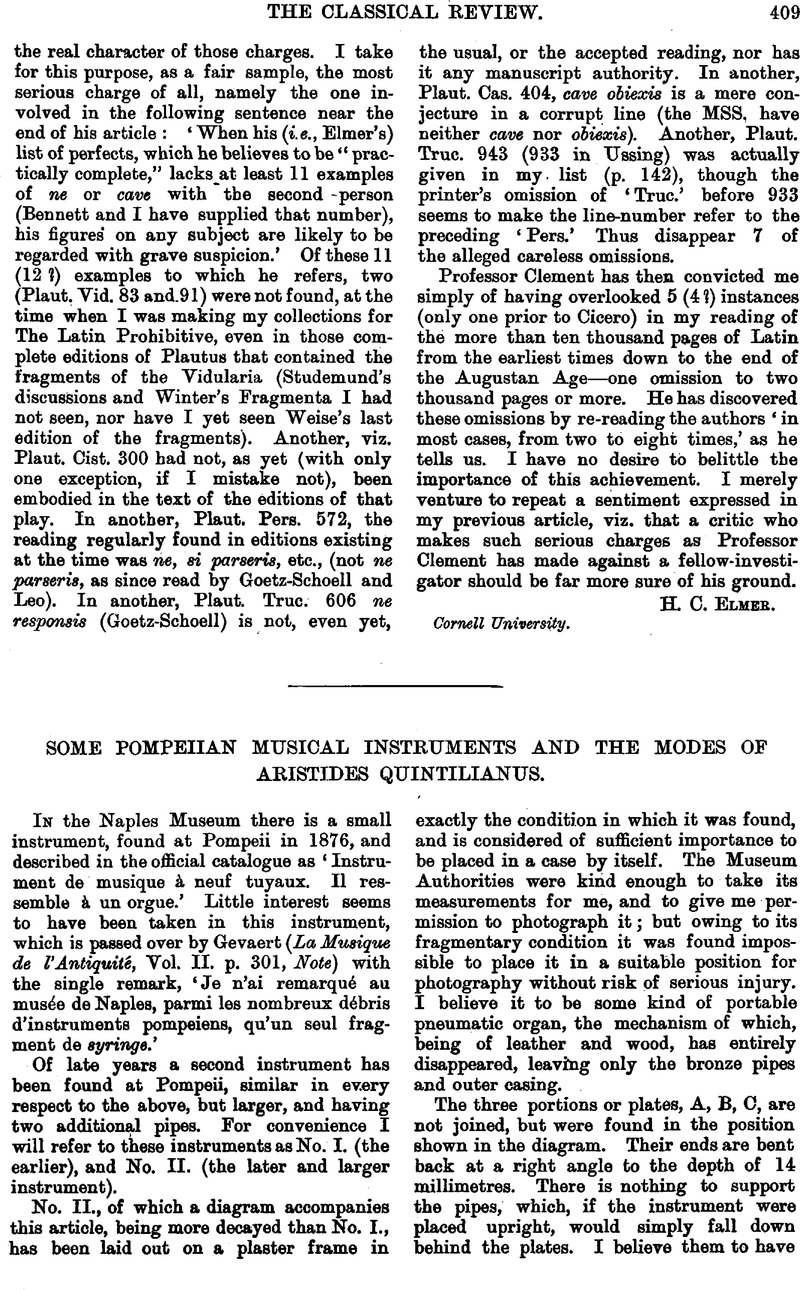No CrossRef data available.
Article contents
Some Pompeiian Musical Instruments and the Modes of Aristides Quintilianus
Published online by Cambridge University Press: 27 October 2009
Abstract

- Type
- Original Contributions
- Information
- Copyright
- Copyright © The Classical Association 1902
References
page 410 note 1 In 1892 I made a thorough examination of No. I. and found nothing of the nature of metal tongues such as would be used for pipes of this calibre if they were ‘reeds.’
page 411 note 1 Anonymi Scriptio de Musica, published with notes by Bellermann, F.. Berlin, 1841.Google Scholar
page 412 note 1 The Auloi were each capable of playing a complete series of semitones (except that one single semitone was absent from one of the instruments). By means of mechanism any holes could be opened or closed at will before and after, but not during performance.
page 412 note 2 ‘Le ré inférieur est un son supplementaire, qui ne fait pas partie intégrante de la gamme, et ne sert sans doute que pour certains écarts exceptionnels de la Mélodie.’—Laloy, M. L., in reference to the Aristidean Modes in Congrès International d'Histoire de la Musique; Combarieu: Paris, 1900.Google Scholar
page 413 note 1 Meibom, page 16. See also Westphal's, explanation in Aristoxenus, Melik und Rhythmik, Leipsic 1883; p. 234.Google Scholar
page 413 note 2 Since this article was written I have been kindly given an opportunity of examining a hydraulic organ, constructed by the Rev. F. W. Galpin. Its scale of 19 sounds gives the six modes mentioned by Anonymus as those used on this instrument; and on running the fingers rapidly over the keys at random I was charmed by the attractive character given to the music by the modal arrangement of the notes.


